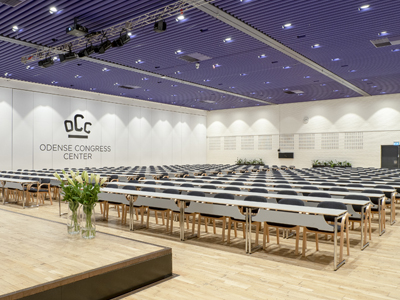It is the FM supplier’s job to replace a filter in the ventilation system once a month. The supplier has found a better filter that only needs replacing every other month; but if they told the customer, they would get paid less for the same service.
Should the supplier tell them or not?
This is a case that Trygve Dahl, senior sourcing manager at Storebrand, takes up as an example of how the traditional transaction-based FM contracts don’t work.
“The supplier has no incentive to work consciously with improvements and innovation to save the customer money and improve quality. Those are some of the reasons why we wanted to change our business model,” he says.
The Vested business model turns all the traditional outsourcing routines on their collective ear. Instead of procuring a carefully defined service, the parties enter into a strategic partnership where trust is a key factor.
“Partnerships of various types are not uncommon in big FM contracts,” Trygve Dahl explains, “but Vested has elements that benefit businesses with development and innovation ambitions. That’s a big, crucial difference.”
Storebrand’s “Vested journey” began in the spring of 2017. The company’s property management division had built up a wide portfolio of suppliers over the years that was cumbersome to monitor.
“This, in combination with a new corporate strategy, led to a need to consolidate and change our thinking,” Dahl says. “So we developed a new outsourcing strategy that clearly emphasizes Storebrand’s focus on sustainability. We soon realized that we needed a strategic partner that thought like us, but with property operations as its core business. We started looking for a supplier that was interested in, and could be expected to manage, a strongly relationship-based agreement. Coor is a specialist company and a supplier we found through the Vested process, and we’ve established a good relationship with them.”
Changing business models was a daring path to travel, he admits, but the new management of Storebrand Eiendom was completely on board with the new outsourcing strategy and business model.
What was the real challenge of switching from a transaction-based business model to a relationship-based one like Vested?
“One major difference in comparison with traditional procurement is that the Vested model is an enhanced relationship-based contract form with a fixed framework that helps to control the process. The order of priorities is completely reversed from traditional procurements. Instead of requirement specifications and price negotiations, a Vested process focuses on building trust. The collaboration is largely about creating and maintaining trust between the parties, which demands a great degree of openness and transparency from both sides.”
The Vested business model consists of five rules, placing vision, strategic goals and key performance indicators (KPIs) first. The price model comes in at the fourth step. The fifth and final rule deals with the management model as a key success factor.
But first, before embarking on the Vested journey, the two parties define “guiding principles,” a set of demands that must be met if they are to go on to become a permanent contract. Once the parties agree on the requirements, the journey can start, which later leads to a final agreement.
To go back to the initial example, the more effective ventilation filter, the Vested model contains an incentive for the supplier to develop the services. The gains the customer makes through replacing the filter less often are shared with the supplier according to a model. The key figures are also linked to quality assessments conducted with Storebrand’s commercial tenants. Happier customers are a priority in a Vested contract.
“It’s been a very inspiring journey, in which we and Coor together had to think outside the box, and it’s going to be exciting to see where it leads,” Dahl says. “We’re also very happy with the mutual long-term focus of the contract and all the new knowledge we will be able to use in the future.”





